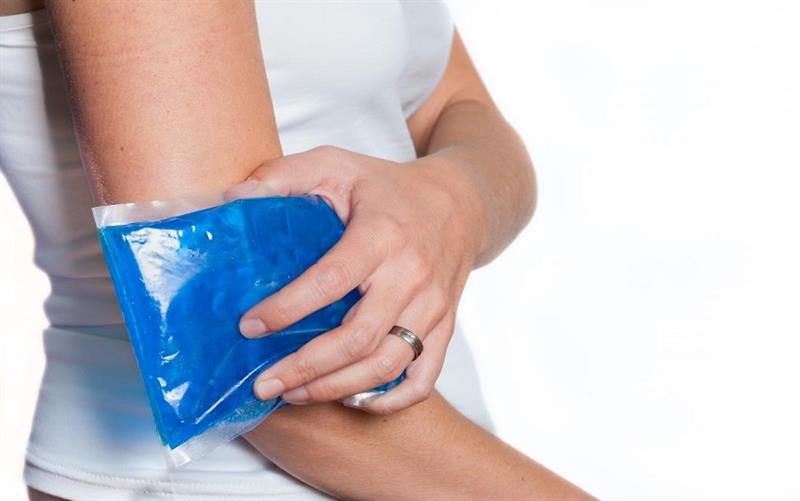
In the realm of natural remedies for pain and discomfort, hot and cold pack therapy stands as a tried-and-true method that has been used for centuries. This simple yet effective approach harnesses the power of temperature to alleviate a range of ailments. Whether you're dealing with an injury, inflammation, or muscle tension, understanding the principles of hot and cold pack therapy can empower you to manage discomfort and support your body's healing process.
Hot and cold pack therapy are valuable tools in managing pain, promoting relaxation, and supporting the body's natural healing processes. By understanding when and how to use these therapies effectively, you can harness their benefits and enjoy a more comfortable, pain-free lifestyle. Whether you're seeking relief from a recent injury or managing chronic discomfort, incorporating hot and cold pack therapy into your self-care routine can make a significant difference in your overall well-being.
Hot Pack Therapy: The Warm Embrace
Hot pack therapy, also known as thermotherapy, involves the application of heat to affected areas of the body. This method works by dilating blood vessels, promoting better circulation, and relaxing muscles. Here's what you should know about hot pack therapy:
1. Pain Relief:
Heat is particularly effective for easing muscle stiffness, joint pain, and cramps. It increases blood flow to the area, which can accelerate the healing process.
2. Muscle Relaxation:
Heat therapy helps relax tight muscles, reducing tension and promoting a sense of relaxation. It's commonly used before stretching or engaging in physical activities.
3. Injury Recovery:
Applying heat to injured areas can help reduce muscle spasms and increase flexibility. However, it's important not to use heat immediately after an injury as it may exacerbate inflammation.
4. Application Methods:
Hot packs can be heated in various ways, including using microwaves, hot water, or specialized heating devices. Always ensure the temperature is comfortable and avoid applying heat directly to the skin.
5. Enhanced Flexibility:
Applying heat before stretching exercises or physical activities can improve flexibility by increasing blood flow to the muscles and reducing stiffness.
6. Stress Relief:
Heat therapy not only soothes physical discomfort but also offers relaxation benefits. The warmth can have a calming effect on the body and mind.
7. Arthritis Management:
Individuals with arthritis often find relief through the application of heat. Heat can help alleviate pain associated with joint inflammation and stiffness.
Cold Pack Therapy: The Refreshing Chill
Cold pack therapy, also known as cryotherapy, involves the application of cold to reduce inflammation and numb pain. Here's what you need to know about cold pack therapy:
1. Inflammation Reduction:
Cold therapy is effective for reducing swelling and inflammation by constricting blood vessels. It's commonly used for injuries like sprains, strains, and bruises.
2. Numbing Pain:
Cold packs numb the area, which can help alleviate pain by reducing nerve activity. This is especially helpful for acute injuries and post-surgical recovery.
3. Reducing Spasms:
Cold therapy can help calm muscle spasms and decrease muscle soreness after intense workouts or physical activities.
4. Application Methods:
Cold packs can be stored in the freezer and applied directly to the skin. It's crucial to use a barrier like a cloth or towel to prevent frostbite.
5. Reducing Migraine Symptoms:
Applying a cold pack to the forehead or neck can help alleviate migraine symptoms by constricting blood vessels and reducing pain.
6. Post-Workout Recovery:
Cold therapy can be particularly useful after intense workouts to reduce muscle inflammation and prevent delayed onset muscle soreness (DOMS).
7. Managing Chronic Conditions:
Cold therapy is often employed to manage chronic conditions like tendonitis, bursitis, and plantar fasciitis, where inflammation is a key factor.
Precautions and Tips:
1. Temperature Moderation:
Avoid extremes in temperature. For hot therapy, ensure the temperature is comfortably warm but not scalding. For cold therapy, use a cloth or towel as a barrier to prevent frostbite.
2. Duration of Application:
Apply hot or cold packs for about 15-20 minutes at a time. Longer periods can lead to skin damage or decreased effectiveness.
3. Protecting Skin:
Always place a cloth or thin towel between the pack and your skin to prevent burns or frostbite.
4. Individual Sensitivity:
Everyone's tolerance to heat and cold is different. Start with shorter application times and gradually increase if comfortable.
5. Consulting a Professional:
If you have any medical conditions or concerns, it's wise to consult a healthcare professional before using hot or cold therapy, especially if you're unsure which method is appropriate.
6. Alternating Therapies:
Some conditions may benefit from alternating between hot and cold therapy (contrast therapy). For example, you might start with cold therapy to reduce inflammation and then switch to heat therapy to promote relaxation.